This newsletter is a reader-supported publication. We’re trying to keep things as free as possible, but if you enjoy what I write and want access to exclusive weekly recipes, and if you are at a point in your life to support our newsletter, please consider becoming a paid subscriber. Thank you!
So welcome to the third issue of Magnets on a Fridge, a random collection of things worth reading/cooking.
What a string of busy weeks. We are in the thick of cooking class season, meeting fun, passionate, fabulous people from all over the world: US, Ireland, New Zealand, France, Australia, Canada, Holland, Belgium, Germany, Israel… I never got to travel much, but thanks to my classes I can see the world through the stories of our guests.
Besides this, after each course, Tommaso cleans up everything and quickly walks upstairs to work on our home kitchen renovation. What a week! (read more about it below).
As every year, I tend to disappear from the online world during May and June: I owe you a Cook Along, an online book event, and a couple of recipes, but stay assured that as soon as I’ll manage to put together all the pieces it’s going to be a blast. In the meantime, I use those rare free moments that I have at the end of the day to listen to Livia while she sings and tells stories with imaginary friends (Caciol, Battel, and Ciappalel) and proclaims herself a ballerina. Where did she get it? But it moves me every time to see how her young, unripe personality is developing into a bubbly little girl.
So, let’s start, I collected something to share with you. And read till the end, there’s a recipe you don’t want to miss!
Something about Cucina Povera
[Cucina Povera is on discount on Amazon right now!]
I’m treasuring the articles that talk about Cucina Povera, so allow me a few seconds of shameless self-promotion. No, it’s not shameless, it’s just that I’m bursting with pride every time someone talks about Cucina Povera.
These are the most recent articles on Cucina Povera, interviews and book reviews, where you can read more about the process of writing the book and find a couple of recipes, too.
Cucina Povera: Giulia Scarpaleggia, Founder Of Juls’ Kitchen, On How To Cook The Tuscan Way. Not only is it exceptionally beautiful, but it also subscribes to the school of thought that having seven or eight really excellent recipes that spark joy in your repertoire is enough. This, along with its exquisite contents, has catapulted it right to the top of our list of instant classic cookbooks.
Tastemakers. Giulia Scarpaleggia from Juls’ Kitchen on The Taste Edit.
These Are The 16 Best Cookbooks Of 2023 So Far on Tasting Table. Not only are the recipes budget-friendly, but they're also incredibly easy to make, relying on a handful of simple ingredients from pantry staples to cheaper cuts of meat to foraged delights.
The best cookbooks of 2023 so far, on Delicious Magazine. Giulia Scarpaleggia celebrates Italian rustic cooking, where l’arte dell’arrangiarsi – the art of making do with what you have – turns seasonal ingredients, cheaper cuts and storecupboard staples into great meals. Expect classics, stews, breads and more, along with surprises such as Sicilian watermelon pudding (thank you
for your kindest words).‘Cucina Povera’ celebrates the Italian art of making the most of humble ingredients, on Oregon Live. Her latest cookbook (…) is full of inviting writing, interesting little history lessons and plenty of tips to make the most of those simple ingredients. Of course, there are also 100 recipes accompanied by beautiful photographs from Tommaso Galli, Scarpaleggia’s husband.
If the book is at the moment available everywhere in North America and Australia, it is difficult to find in Europe. In the UK, it is available at Blackwell, Waterstones, Bookshop.org, Foyles, Golden Hare Books, and other independent bookstores. We’re still working on understanding where it is available in other countries, Italy included, so if you spot it online let us know!
And if you spot the book in a bookstore, please snap a pic for us, it will be like traveling vicariously through your photos!
Something to read and something to cook
I’ve finally read Crying in H-Mart. I am not good in keeping up with my to-read list, so I end up reading books several months after buying them. When I started reading it, I could not put it down, even though there were moments when it really hurt. If it has been for over one year in the New York Times Bestseller List, there’s a reason. Food memoirs are probably my favourite kind of books to read, and this memoir about family, food, grief, love, and growing up Korean American had everything I search for in a book.
We’re rewatching Disney classics with Livia, and over the weekend we introduced her to Ratatouille, years and years after the first time I had watched it. Livia was not impressed, but I found myself dreaming again about a Paris trip, and about ratatouille.
My friend
has a new newsletter here on Substack. It's in Italian, but if you can read it I highly recommend it. To know something more about her, you can read her Q&A for the Other People's pantry series.Other people's pantries. Q&A with Manuela Conti
Spring brought the first lemons on my lemon tree, the most beautiful gift I received for my 40th birthday two years ago from my father-in-law. There are five of them, and teeny-tiny lemons-to-be dotting all the branches. I hope they will get through this rainy spring. In the meantime, I’m experimenting with lemon leaves in the kitchen: last week I wrapped a monkfish and roasted it in the wood burning oven. It’s the first attempt at using lemon leaves, and certainly it won’t be the last one. Next on my list: grilled provolone slices wrapped in lemon leaves. I’ll keep you posted.
Have you read or cooked or watched anything interesting lately that you want to share with us all?
HOME KITCHEN RENOVATION UPDATE
While I’m mainly busy teaching classes and writing this newsletter, Tommaso is working on renovating our home kitchen. We moved everything to our living room, brought the old kitchen to the recycling depot, then he patiently removed all the old backsplash tiles.
This brought up a stratification of colours: this room has been a kitchen in the past 24 years, but before that, it had always been a bedroom, the very same bedroom where my father was born and my grandmother was born. Aqua green, lilac, ochre, yellow: how many life and family events happened in this room. I’m excited to see what the future will bring, and how my white and green kitchen will turn out.
You can read more about our kitchen renovation here:
We are (dreaming of) renovating our home kitchen
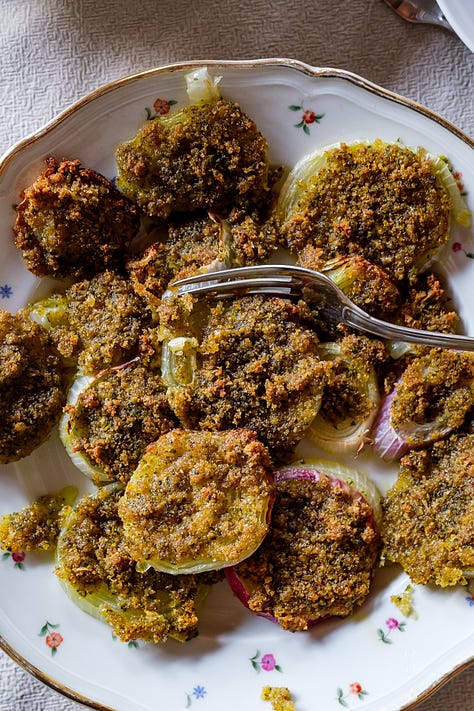
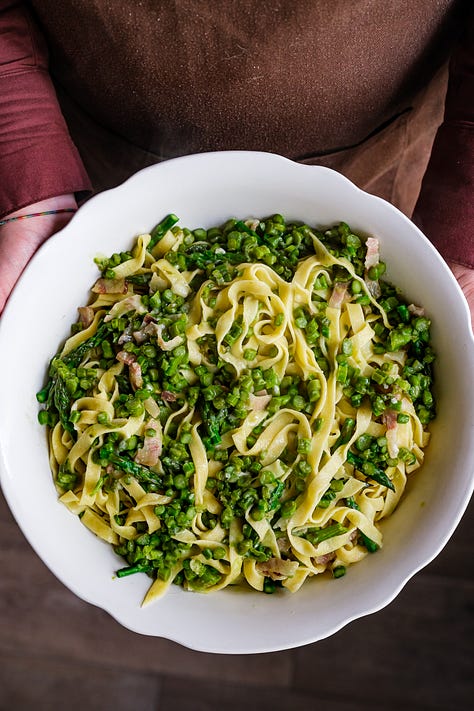
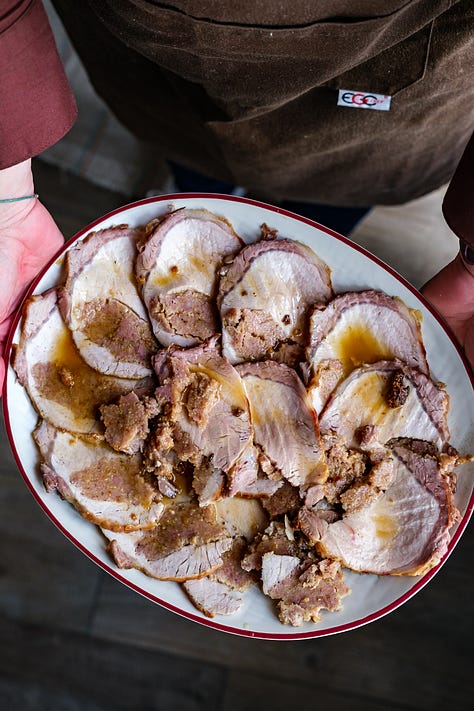
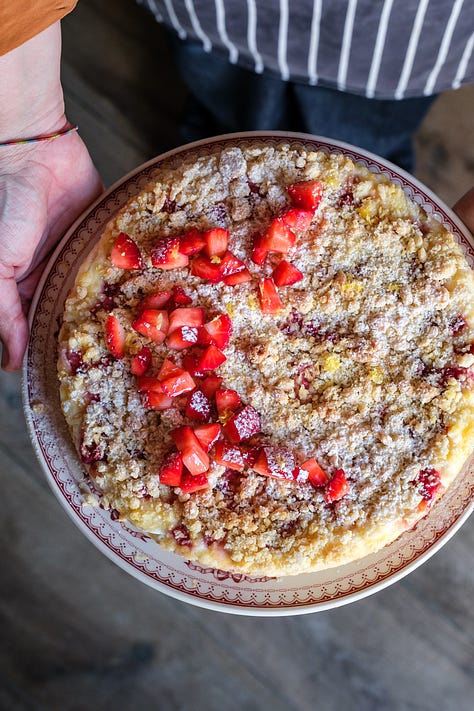
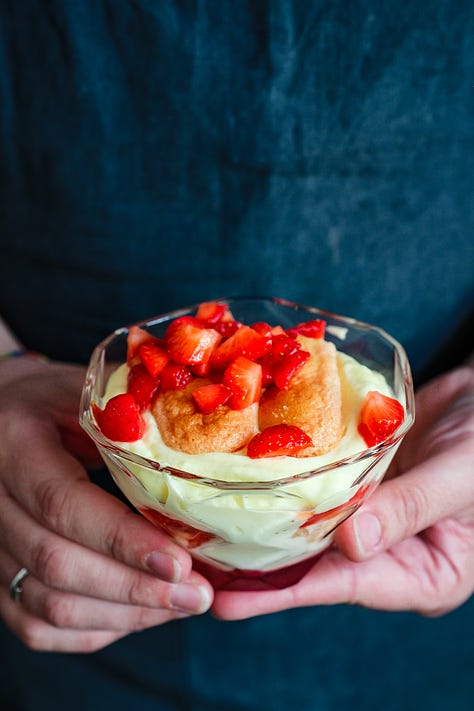
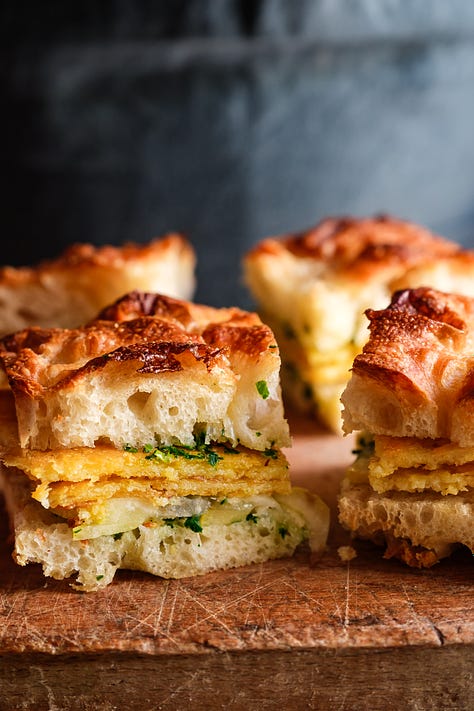
Favourite dishes during the Spring classes
I said goodbye to artichokes, and welcomed zucchini and zucchini flowers, basil, the first cherry tomatoes. I kept splurging on ripe strawberries, focusing on vegetables in almost every course of the meal, and slicing loaves after loaves of wholegrain sourdough bread and fluffy, crunchy focaccia.
Here you can find some of the recipes we’ve been cooking in recent classes, something you could replicate at home for a Spring gathering:
Baked onions with breadcrumbs and pecorino cheese. The recipe is in our previous book, From the Markets of Tuscany (p.58 ), but you can find a similar recipe with eggplants on the blog.
Oven baked zucchini flowers stuffed with ricotta, basil and pine nuts. They will become a leitmotiv of our classes for a couple of months. I loved them fried, but when you want to stuff them with a pesto scented ricotta this is a great, easy option.
Tagliatelle with asparagus, spring onions, and guanciale. I picked a bunch of wild asparagus at the market, and they ended up in a pan with spring onions and pork guanciale to dress a bowl of egg tagliatelle.
Stuffed pork loin with sausage, pecorino and fennel flowers. I’ve been making roasted pork loin for months, I needed a change.
Stewed artichokes and fava beans with mint, a recipe I learnt from Tommy’s uncle in Salento, something I’ll be experimenting on the next Spring, as soon as artichokes and fava beans will share again the market stalls.
I kept baking the ricotta crumb cake with the fresh local sheep ricotta I can find at the market, and I kept topping it with strawberries. Soon it will be time for cherries, and peaches, and plums…
For the first time I introduced tiramisu in my cooking classes (it was about time, I know), and it was immediately turned into a Spring dessert with the same lovely strawberries I’ve been feasting on recently. Do you want the recipe?
Olive oil chocolate cake with lemon macerated strawberries. More about this cake below.
RECIPE - Olive oil chocolate cake with lemon macerated strawberries
The cake was so good I thought I could share a quick recipe here. It took a couple of years of adjustment, but I think I finally came to the texture I was aiming to: moist and intensely chocolatey. Yet one more cake I developed thanks to my classes, as I told you in the latest post on recipe testing and writing.
It starts as a pound cake, but we turned it into an intense chocolate olive oil cake. As strawberries are in their peak season, we topped the cake with lemon macerated strawberries.
For the Macerated Strawberries
200 grams/7 oz strawberries
2 tablespoons sugar
Juice ½ lemon
For the Chocolate Olive Oil Cake
4 large eggs
240 grams/1 cup + 3 tablespoons granulated sugar
180 grams/¾ cup + 1 tablespoon extra virgin olive oil
60 grams/¼ cup espresso coffee
1 teaspoon vanilla extract
200 grams/1⅔ cup all-purpose flour
40 grams/½ cup unsweetened cocoa powder
8 grams/1⅔ teaspoon baking powder
1 teaspoon cinnamon
1 pinch fine sea salt
100 grams/3½ oz dark chocolate, chopped
Start with the macerated strawberries
Rinse, hull, and dice the strawberries. Collect them in a bowl, and dress them with sugar and lemon juice. Stir and leave them at room temperature.
Make the cake
Preheat oven to 180°C/350°F and line a 22cm/9 inch round cake pan with parchment paper.
Cream the eggs with the sugar until pale and light.
Combine extra virgin olive oil, espresso and vanilla extract, and stir them into the cake batter.
Sieve flour, cocoa powder, baking powder, cinnamon and salt, then stir the dry ingredients into the cake batter.
Add half of the dark chocolate into the cake batter and stir.
Scrape the batter into the prepared pan, then top it with the remaining chocolate.
Transfer the cake into the hot oven and bake for about 45 minutes, until a toothpick inserted in the centre comes our clean.
Pay a close look at the cake in its last 5-10 minutes of baking, as chocolate cakes are treacherous, they tend to burn without you realizing it.
Remove the cake from the oven, place on a wire rack and let it cool down for about half an hour, then remove from the cake pan and place it on a serving plate.
Top with half of the macerated strawberries and drizzle the juice on top, then serve when cold with the remaining strawberries.
Cooking Experiences in Tuscany with us
Do you know we also offer in-person cooking classes and edible experiences in Tuscany? Our calendar is slowly filling up, over 300 people have already booked a class this year, and there are only a few days left available during the high season. And yes, bookings for 2024 are already open, too!
Every meal will be an excuse to travel through Tuscany thanks to local recipes, memories and stories. Learn more about our cooking classes here.
Next available openings:
Wednesday, June 7th - Market to Table Cooking Class - 1 spot available
Thursday, June 8th - Tuscan Cooking Class - 4 spots available
Wednesday, July 19th - Market to Table Cooking Class - 6 spots available
Tuesday, July 25th - Tuscan Cooking Class - 4 spots available
Wednesday, July 26th - Market to Table Cooking Class - 6 spots available




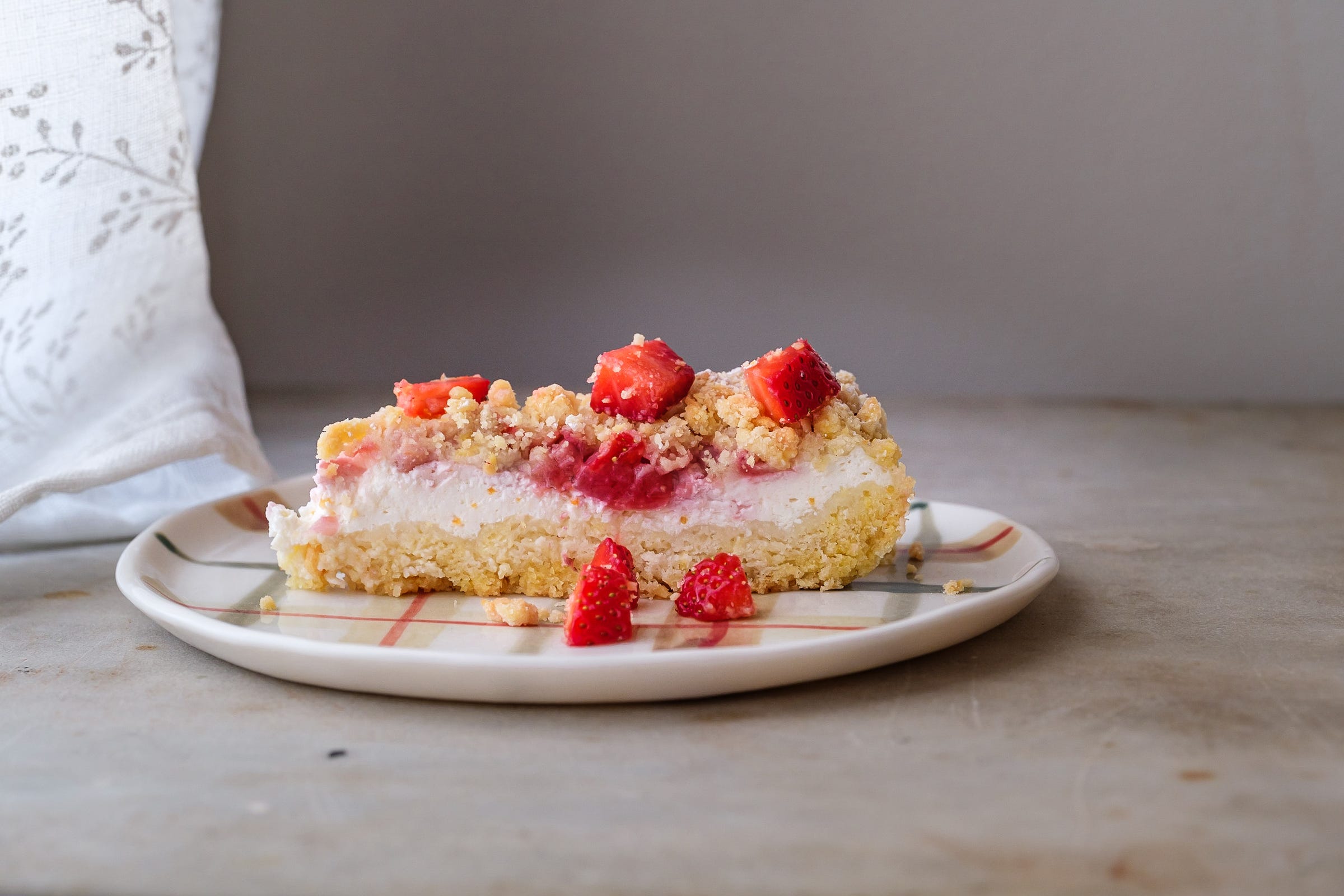

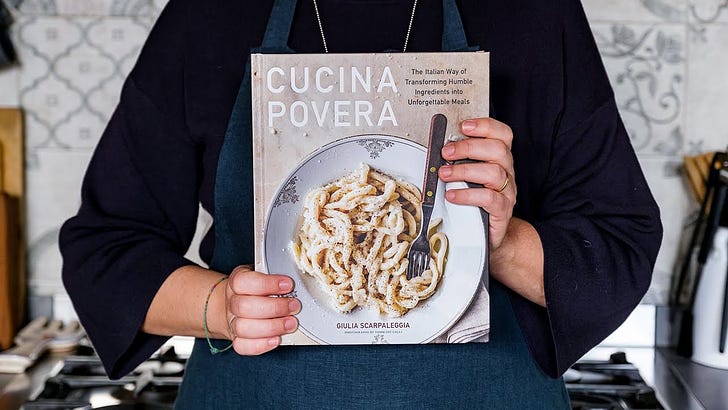


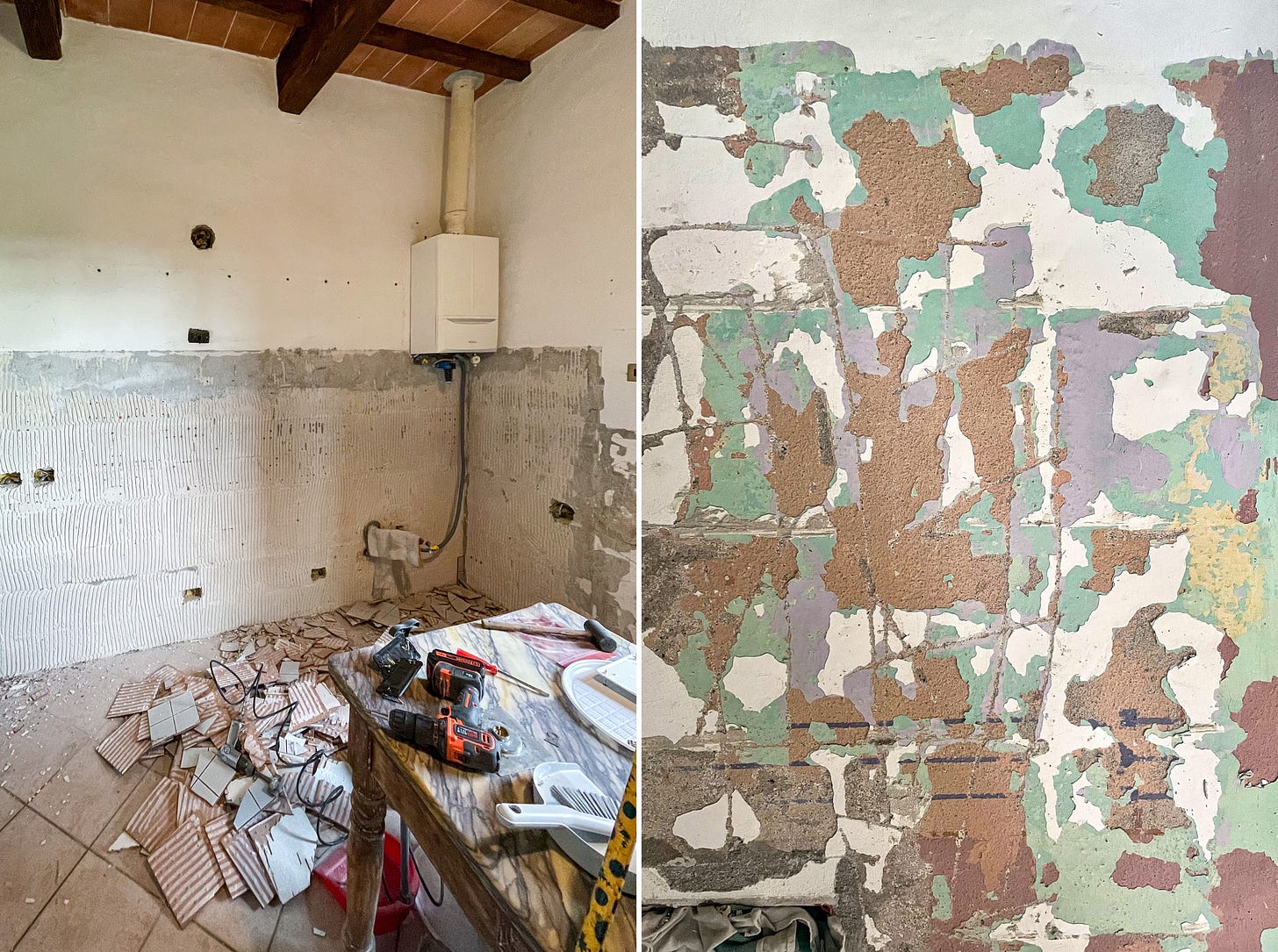
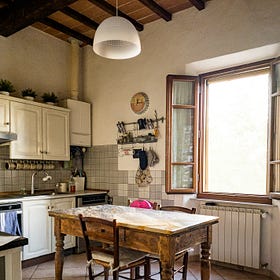
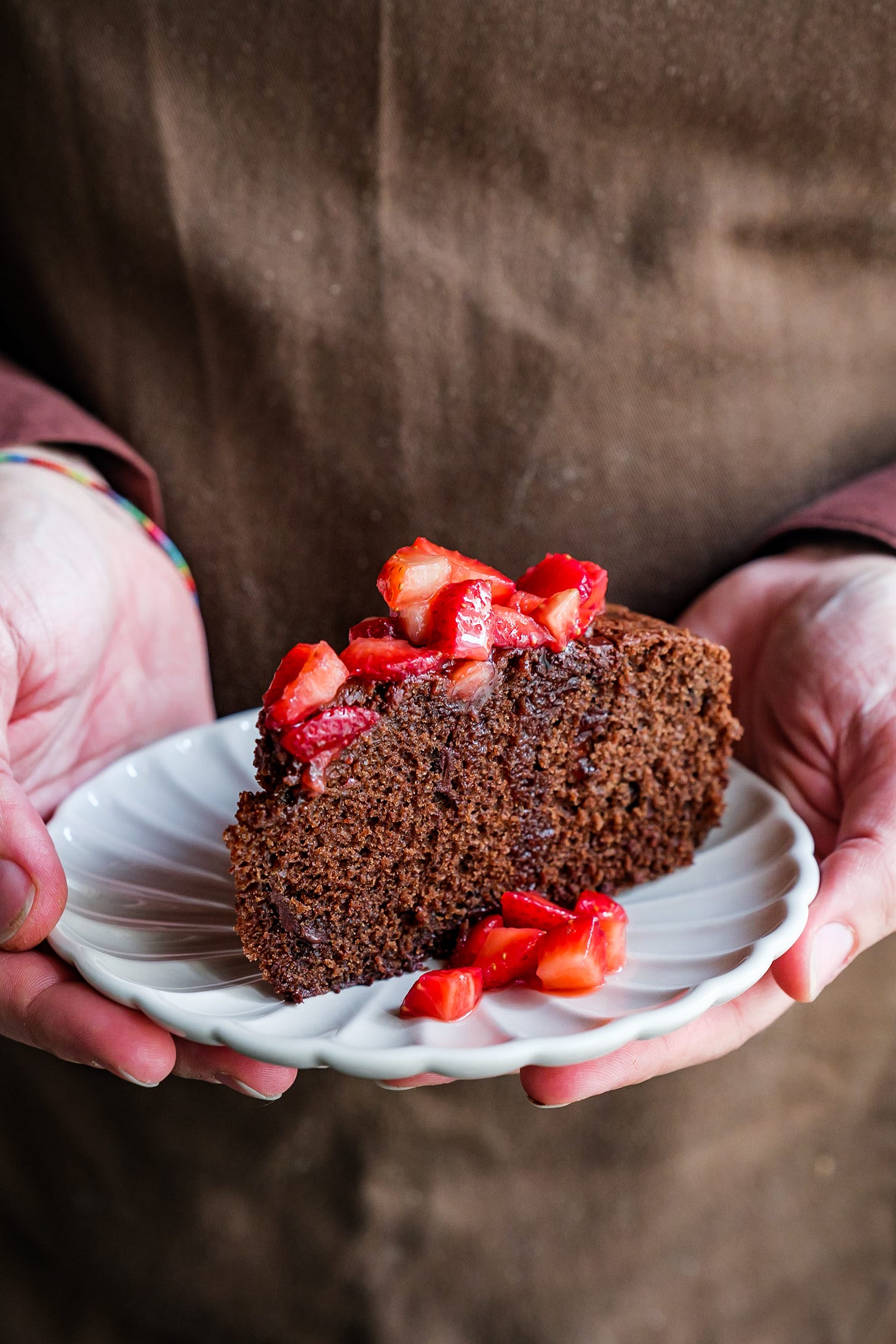

I cannot wait to bake the chocolate cake. As always I look forward to your email and your recipes and you sharing your love of food and life.
The tomatoes from the cookbook were such a hit that the chocolate cake is bound to be also. Looks like it will be dessert next Sunday! Can’t wait for you to share pictures of the redone kitchen, I know you are looking forward to having it completed.